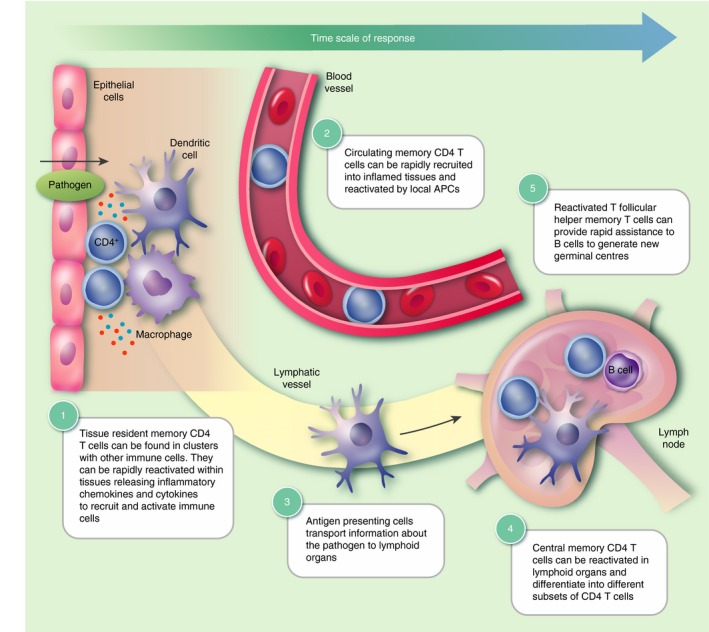Figure 1.

Protective roles of memory CD4 T‐cell subsets. The protective response to previously encountered pathogens is dependent on a number of T‐cell subsets. Upon pathogen encounter, resident memory CD4 T‐cells (Trm) that can be found in clusters with macrophages or dendritic cells respond rapidly by proliferating and releasing inflammatory cytokines and chemokines (1). This stimulates the recruitment of circulating effector memory CD4 T‐cells (Tem) to the inflamed tissue to augment the immune response (2). Local antigen‐presenting cells (APCs) can subsequently transport antigen to lymphoid organs where they activate central memory CD4 T‐cells (Tcm) (3–4). These central memory T‐cells then expand and recirculate to confer systemic protection or further amplify the response at inflamed tissues. Memory follicular helper T‐cells (Tfh) reactivated by either dendritic cells or B‐cells can enter B‐cell zones and induce rapid production of class‐switched antibodies, which are then released into the circulation (5). These different memory T‐cell subsets work in concert to provide long‐lasting protection upon re‐exposure to the same pathogen.
